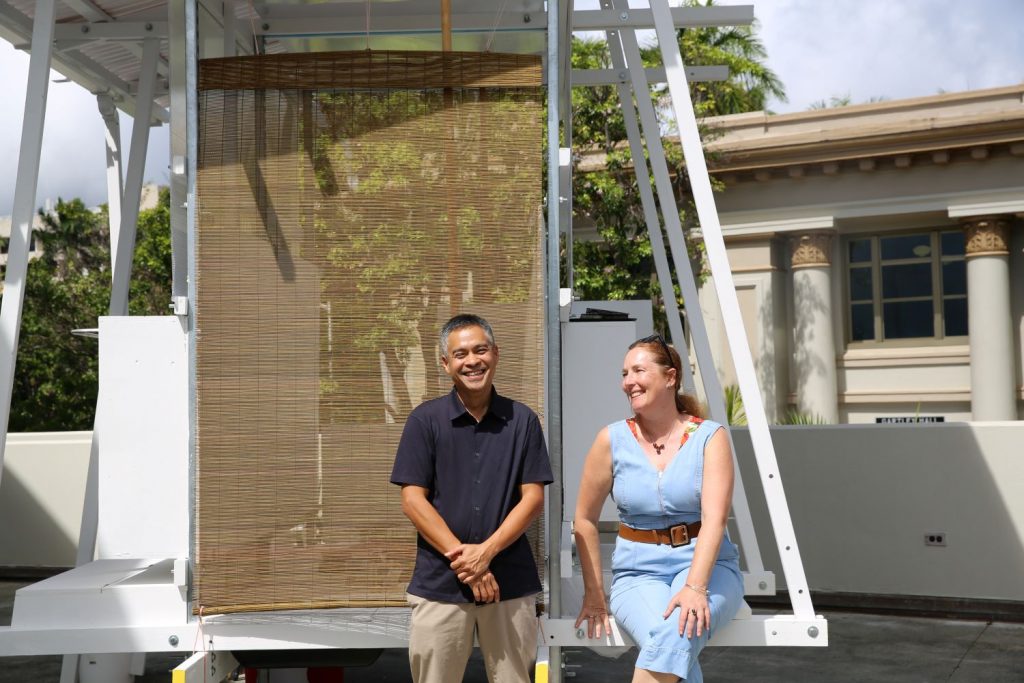HI-EMA, UH-Mānoa Team Up to Create Post-Disaster Shelter Prototype

Hawai‘i can experience hazards that can force many people from their homes, but its remote location and fragile supply chain make it much harder to ship in supplies to provide temporary shelter when a disaster such as a hurricane or tsunami strikes.
“Hawai‘i has been fortunate over the past few decades and avoided the very destructive major events with widespread damage that we’re most concerned about as emergency managers,” David Lopez, executive officer of the Hawaiʻi Emergency Management Agency, said in a press release. “An event like that could create a huge need for shelter, but it also could make it much harder to rely on outside resources to provide that shelter.”

So HI-EMA and the University of Hawaiʻi at Mānoa teamed up to design a prototype for a temporary shelter that’s quick and simple to build, uses inexpensive standardized parts and is easy and compact to store until needed.
The prototype, dubbed the Wiki Hale by the UH School of Architecture students who created it, could eventually be assembled in linked clusters to form communities with shared kitchen spaces and to house residents for weeks or months during recovery from a major disaster.
“The partnership with UH gave us an opportunity to explore a uniquely Hawai‘i solution to the specific challenges we face here,” Lopez said in the press release.
“The Wiki Hale is a post-disaster temporary housing unit prototype design,” Amber Ternus, the project lead for the state,” added in the release.
The project began with a call to UH-Mānoa assistant professor Bundit Kanisthakhon, who quickly restructured one of his architecture classes to focus on creating the unit.
“We centered all the design decisions around living in a tropical environment, living somewhere that has a high amount of sun, humidity and rain,” Ternus said in the press release.
Just as importantly, Ternus added, the entire unit would only cost about $2,000.
“We were very much wanting to design something that would be available and practical for people to use when there are very limited resources,” she said in the press release.
Though the prototype is the only one of its kind, the team behind Wiki Hale have made the plans open-source so that anyone could collect the materials and build their own. The UH team also plans to continue to refine the existing unit and design to create more options and configurability.
Kanisthakhon said he hopes the prototype will act as a seed for other designs uniquely suited for the tropics and that incorporate the outdoors environment in architectural decisions. For Ternus, the project showcases the power of partnering to find diverse perspectives to address potential problems before a disaster strikes.






